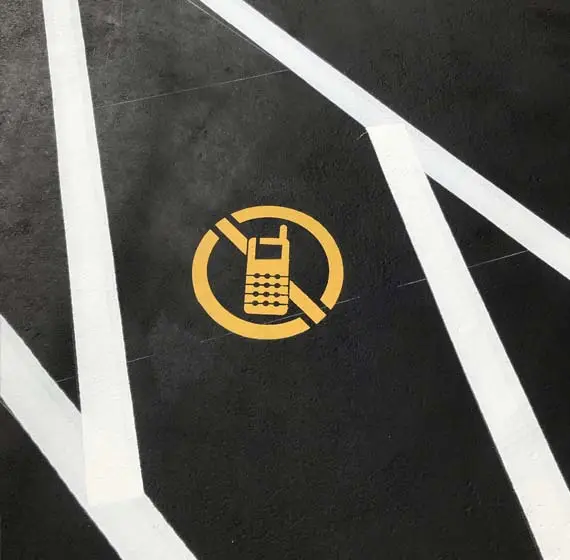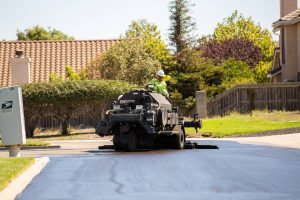Pavement projects typically need to be finished off with some type of marking or striping to help manage the flow of traffic. Please remember, there are many ADA compliance regulations that govern pavement markings, which means it’s important to get the job done right — the first time. GPM knows federal and state laws and the most practical and cost-efficient ways to comply with them. These laws change often, and we leverage technology, information, and education in order to stay on top of the adjustments.
Pavement Marking
- Parking Spaces
- Disabled Parking Zones
- Crosswalks
- Stop Bars
- Stenciling (“Visitor”, “Reserved”, “Compact”)
- Custom Stenciling (Numbers, Names, etc.)
- Signage
- Mechanical Markers
- Reflective & Non-reflective
- Rumble Strips
- Turtles & Botts’ Dots
- Parking Bumpers
- Curb Painting
The staff are amazing. They take time to not only answer my questions, but my HOA questions, give quick responses to emails, attend meetings, and meet us at the property. The work they do at my properties – from cement to asphalt – is impeccable. I highly recommend General Pavement Management, whether it’s a large job or small pothole, this company will take care of your every need.
Crystal R
GPM Pavement Marking
GPM team has decades of experience with pavement marking. That includes specialized knowledge of best practices and traffic control. We use professional grade paints and state-of-the-art striping machines that are best-suited to your project. We will work with you to create an accurate budget and effective notification strategy.

GPM gives you start-to-finish pavement marking services that include:
- Planning
GPM will provide a plan that takes your unique needs into consideration:- Amount and type of traffic.
- Climate and weather conditions.
- Federal / State ADA regulations.
- Scheduling and notifications to the public and/or residents.
- Design
GPM works with you to create a design that matches the overall aesthetic and landscaping of your site. - Pavement Preparation
Before painting, the surface needs to be clean so that the paint will bond tightly & permanently to the pavement. - Application
Armed with a detailed plan, the best paint for the job, and a right-sized line striping machine, the GPM team will lay down perfect, clean lines. We’re sticklers for accuracy — we never color “outside the lines”! - Maintenance
GPM will give you a maintenance plan to make sure your pavement lines always look good and are up to code.
Contact Us to discuss how GPM can dress your pavement for success!
GPM Pavement Marking Projects
FAQs for Pavement Markings
What are pavement markings?
Pavement markings are used to convey messages to drivers, indicating which part of the road to use, providing information about conditions ahead, and indicating where passing is permitted. Most roads have permanent markings to show the center of the road (either with solid or broken lines), travel lanes, or road edges.
Pavement markings include words painted on the pavement and arrows that supplement messages posted on regulatory and warning signs. Examples include the words STOP AHEAD before an intersection with a STOP sign.
What do pavement colors indicate?
Yellow lines divide traffic traveling in the opposite direction and mark the center of two-lane roads, plus the left edge of split highways, one-way roads, and ramps. Solid white lines divide traffic lanes that travel in the same direction and are used to mark the road’s right edge.
A solid yellow line indicates that passing is prohibited, whereas a dashed yellow line indicates that passing is permitted. Solid white lines divide traffic lanes that travel in the same direction and are used to mark the road’s right edge. A double white line means lane changes are prohibited, while a solid, single white line indicates that lane changes are discouraged. Finally, a dashed white line indicates that lane changes are allowed.
What purpose do pavement markings serve?
According to the U.S. Department of Transportation Federal Highway Administration, “One of the most important aspects of a safe and efficient roadway is the uniform application of pavement markings to delineate the roadway path and specific traffic lanes. Pavement markings can communicate information to road users like no other traffic control device. They provide continuous information to road users about roadway alignment, vehicle positioning, and other important driving-related tasks.”
What types of pavement markings does GPM do?
GPM specializes in “best practices” and traffic control, using professional-grade paints best suited to your project and state-of-the-art striping machines for:
- Parking spaces
- Disabled parking zones
- Crosswalks
- Stop bars
- Stenciling (“visitor,” “reserved,” “compact”)
- Custom stenciling (numbers, names, etc.)
- Signage
- Mechanical markers
- Reflective & non-reflective
- Rumble strips
- Turtles & Botts’ Dots
- Parking bumpers
- Curb painting
What is GPM's process for making pavement markings?
GPM gives you start-to-finish pavement marking services that include:
Planning
GPM will provide a plan that considers your unique needs:
- Amount and type of traffic.
- Climate and weather conditions.
- Federal / State ADA regulations.
- Scheduling and notifications to the public and/or residents.
Design
GPM works with you to create a design that matches your property’s overall aesthetic and landscaping.
- Pavement preparation
- Before painting, the surface needs to be clean so that the paint will bond tightly & permanently to the pavement.
Application
Armed with a detailed plan, the best paint for the job, and a right-sized line striping machine, the GPM team will lay down perfect, clean lines. We’re sticklers for accuracy — we never color “outside the lines!”
Maintenance
GPM will give you a maintenance plan to make sure your pavement lines always look good and are up to code.
Is GPM able to follow ADA compliance on new markings?
Since many ADA compliance regulations govern pavement markings, it’s vital to get the job done right — the first time. GPM knows federal and state laws and the most practical and cost-efficient ways to comply with them. These laws change often, and we leverage technology, information, and education to stay on top of the adjustments.




